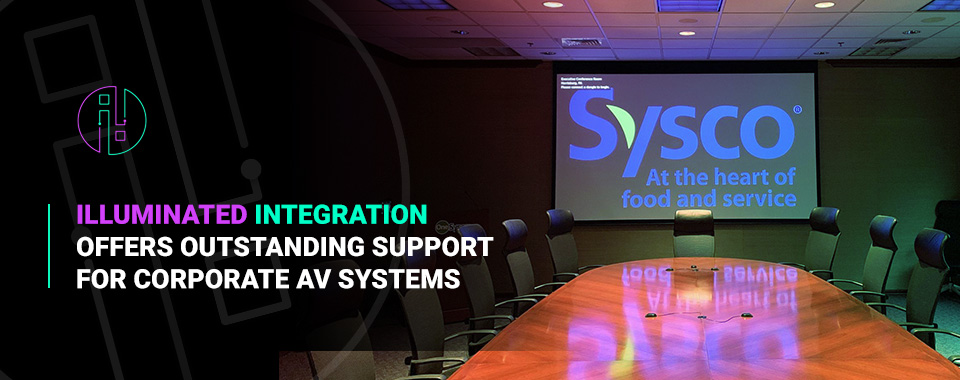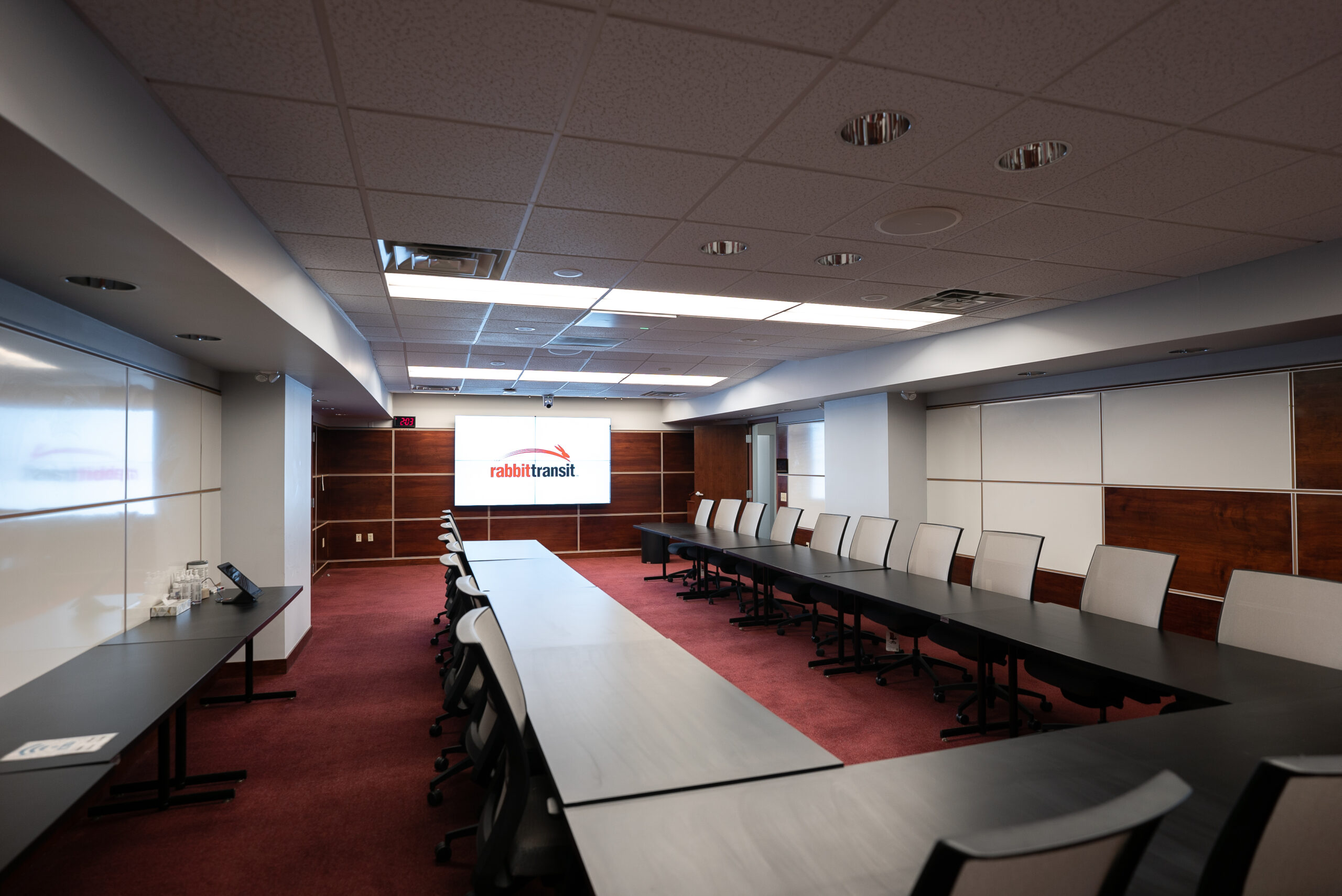

From team meetings to consultations with clients, your conference room space hosts a range of crucial meetings that help keep your team on the same page. Strategically designing your conference room can help you keep your attendees comfortable and engaged for more productive meetings, so your space layout is a vital part of your business operations. With the right design approach, you can enhance the meeting experience and promote more productivity during conferences.
If you’re looking for ways to create an optimized environment in your meeting rooms, consider our conference room design guidelines to help you get started. By keeping these fundamental principles in mind, you can more effectively develop your space and create an atmosphere that encourages collaboration and innovation.
As you navigate requirements to engage stakeholders, explore solutions with new clients, and troubleshoot and brainstorm with your team, you can leverage your business’s conference room space to foster a productive environment. Your meetings’ quality is crucial for working toward your business goals. To have a successful event, you need to create the right atmosphere and setting to drive high attendee engagement.
Whatever type of meeting you host, your conference room design can be a critical advantage to help you stay client-focused and productive. Consider some of the leading reasons why conference room design matters for your day-to-day operations and goal-setting.
Creating the right conference room environment can help your team and clients feel more engaged and motivated. You want to create a setting that reflects your mission and requirements while meeting your attendees’ technological and physical needs. When you create an attendee-focused environment, you’ll help members feel more comfortable and motivated to process critical information, troubleshoot and generate new ideas.
As you build more awareness and engagement, you’ll also get more value from your meetings. Your design choices can be a vital part of this process.
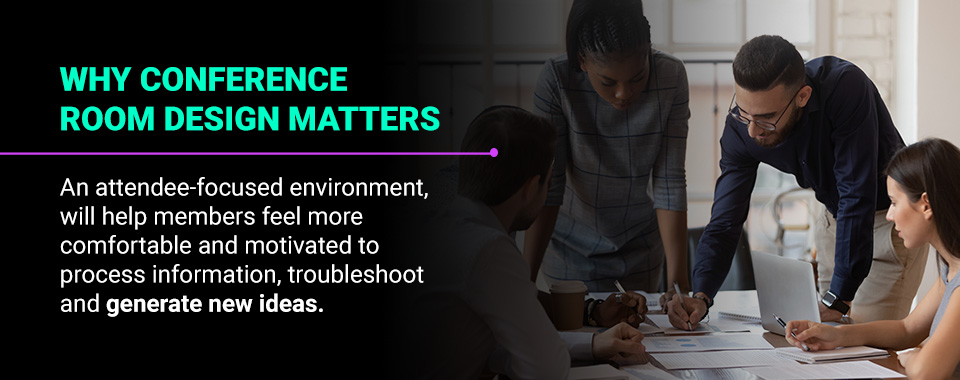
When attendees are more engaged and motivated to handle questions, give feedback and collaborate with peers, you can expect better decision making. With the tools to engage more deeply with the issues and considerations at hand, your attendees can better evaluate different angles of the project. More freedom to collaborate can lead to more perspectives being shared and a more thorough analysis of the questions on the agenda.
Providing a safe and engaging environment for rigorous discussion can help everyone on the team find the most mutually beneficial solutions for critical issues.
Increased feedback and engagement can help your team members delve deeper into creative solutions for challenges and obstacles. When attendees have the space to engage more effectively, consider critical issues from multiple perspectives and feel comfortable troubleshooting, they can create more innovative solutions.
Whatever topic you’re tackling at a meeting, the right environment can help foster more creative approaches to problem-solving and project development.
Along with increased creativity, a comfortable and engaging environment helps attendees focus better on crucial issues. When they feel comfortable yet engaged, team members can critically evaluate the discussion topics more effectively. You’ll accomplish more in meetings as more members feel free to offer their perspectives, and the entire team can better process and focus on discussion points.
When everyone feels included and engaged in meetings, you can create a high-quality event your attendees will appreciate. Building attendee satisfaction can help bolster collaboration and productivity in future sessions. When you encourage team members and clients alike to address challenging issues in a stimulating and inclusive environment, you can get consistently better outcomes from meetings.
Improving the comfort and performance of a conference room can empower all your attendees to contribute more to discussions and get more from your meetings. With the right solutions, you can provide a more engaging experience that equips team members to be more productive and focused. Plan your furniture layout strategically, pay attention to design features and work with Illuminated Integration to provide your facility with innovative meeting technologies. You can create a better learning forum for everyone who attends your meetings by managing these requirements.
If you want to leverage the benefits of a strategic conference room design for your facility, follow these tips to plan your layout effectively.
When setting up your conference space, the right equipment is integral to your team’s collaboration and informational presentations. You want to provide employees and clients with the right tools to share their ideas, process information and collaborate with others throughout the meeting. Modern conference rooms require smart technological solutions to help everyone have a more comfortable and engaging experience.
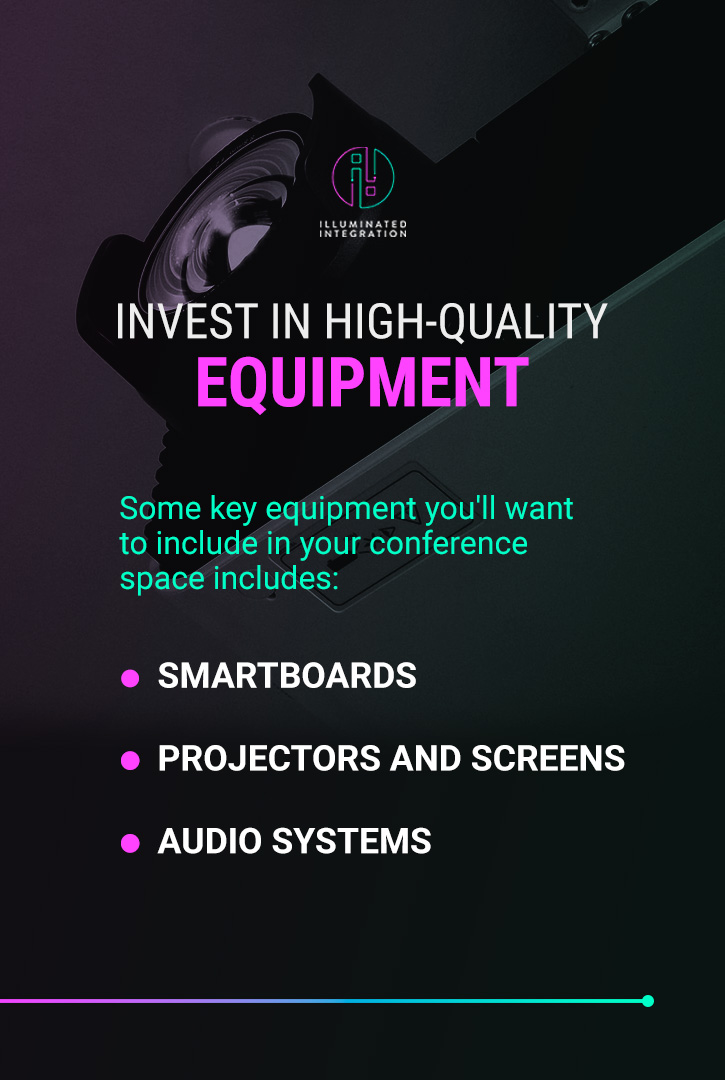
Some key equipment you’ll want to include in your conference space includes:
Whatever the size of your space, you’ll want to consider the meeting size and the appropriate layout. Create an area that’s comfortable for the capacity of people you’ll need to host, ensuring that attendees have enough personal space. You want to set up the room so everyone has some private space, even when you’re having a larger group of people meeting.
Colors can significantly impact how attendees perceive your company and how they engage with the meeting material. Consider your decor and design features and ensure they match the general aesthetic of the building. If your office is a young start-up, you might incorporate some more playful elements into the room. However, if you’re hosting a formal meeting, you’ll likely want a more classic and elegant design for the space.
Whatever aesthetic you choose, select room colors that will help relax and engage your attendees. Incorporate signature colors from your company branding and consider how your design choices affect the overall room atmosphere. For example, bright colors can help the room feel more spacious and stimulating. You might also opt to include an accent wall or other pop of color in a room with a generally neutral palette. Some vibrant colors can help foster creativity and energy.
Because you might use your conference room space for different purposes at different times, ensure it’s a flexible space you can adapt to your requirements. One excellent option to help make the room more flexible is to invest in movable furniture. Options that allow you to rearrange chairs and tables easily can help you adjust for a larger or smaller group of attendees. If you host an event including breakout sessions or small collaborative groups, movable furniture makes it easy for attendees to adjust their seating arrangements for discussion with a smaller group.
Some options you can consider to create a more flexible space include chairs and tables with wheels, lightweight chairs or reconfigurable furniture that you can adjust throughout the meeting. You might even include moveable walls that can divide your meeting space into smaller rooms. These flexible elements allow your entire team to bring more kinetic energy and organic communication to meetings.
5. Consider Table Configuration
Your table setup can be an essential element in attendee engagement. If you’re meeting with a smaller group, a table can help everyone feel on equal footing as they begin the meeting and discussion. Consider the layout that best fits your meeting type.
For instance, a traditional boardroom table may be ideal for formal meetings. If you want to foster engagement with a presenter, a U-shaped table will help everyone focus better on one central point. For a collaborative brainstorming session, a communal work desk can make working together easier for attendees.
To encourage better focus and engagement, consider incorporating more natural light in the room. Studies have shown that exposure to more natural light in offices can improve employees’ overall health and productivity. When you create a conference space with more natural light, you can help attendees feel more alert and engaged while decreasing the risk of headaches, eye strain and other discomforts.
When choosing a room for conferences, select options with plenty of windows to allow more natural light to pour into the room. Open the blinds and let more sunlight in for meetings. If your meeting space does not have windows, you could also bring in natural light lamps to help mimic the positive effects of sunlight. Try to use warmer lighting to reduce eye strain and keep attendees more comfortable throughout the meeting.
A lot of noise in the surrounding environment can significantly distract attendees, so focus on creating a space with minimal outside stimulation. If those in the room can hear voices in the hall, street noise through the windows or activity in another room, you can expect more people to get distracted during meetings.
To help keep outside sounds to a minimum, you can try a few different options. Consider investing in additional insulation or acoustic design features to help everyone in the room hear each other better without being distracted by other sounds. You might add soundproofing strips to meeting doors or windows to limit extraneous noise. Installing a good audio system can also be an important part of improved focus and discussion quality.
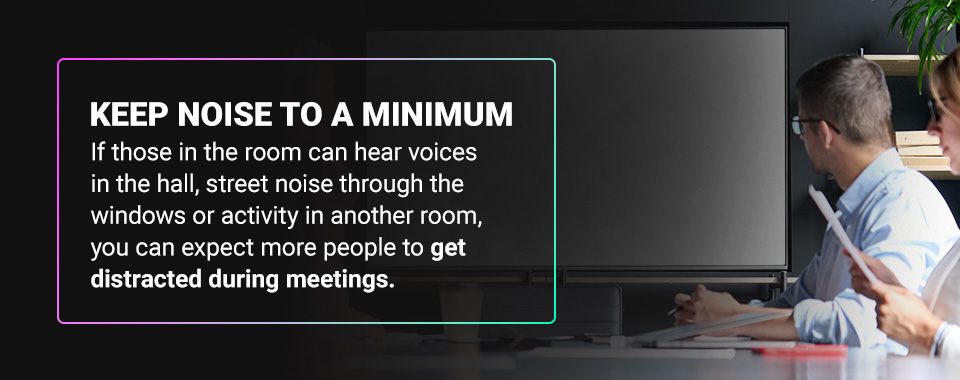
Another vital part of creating a distraction-free and comfortable room is selecting the right location. Your goal should be to find a quiet, accessible and comfortable area for attendees. When you have a strategic setting for your conference room, adding other essential design elements, such as good lighting and sufficient space, will be straightforward.
Choose a conveniently located space in your building that is easy to find when clients attend for the first time. You’ll also want to select an area that won’t have distractions from the outside activity, such as a stream of foot traffic from employees in other departments. If you can, find an area with multiple windows and natural light sources to help keep attendees alert and engaged. It’s also a good idea to position the room conveniently near bathrooms and breakrooms if possible.
One often-overlooked factor to creating a comfortable meeting space is regulating heating and cooling. If your attendees are too hot or too cold, they won’t be able to focus during the meeting. Ensure you have proper airflow in the space, as a well-ventilated room can help keep it cooler, and the fresh air is healthier for everyone in the area. You’ll also want to check that your thermostat can appropriately regulate the room.
To help keep attendees comfortable and focused, the Occupational Safety and Health Administration (OSHA) recommends maintaining a temperature between 68 and 76° F. Pay attention to temperature changes in your conference room to set the suitable range for meetings. For instance, if sunlight streaming in through the windows tends to raise the temperature higher, you might set the thermostat to a lower temperature on the recommended range.
When you set up your conference space, having a neat layout can create a positive image of your company in attendees’ minds. It can also help them stay focused throughout the meeting. Follow any safety protocols for conference room layout and capacity, and ensure you have cables and equipment accessories tucked away to prevent tripping or other hazards.
Create storage spaces for equipment that’s not in use, and develop a tidy organizational system for furniture in the room. You’ll want to keep the area uncluttered and roomy to help attendees feel comfortable. Invest in waste storage bins, cable management systems and wireless equipment to help create a more neat aesthetic for meetings.
When you implement best practices for conference room layout and design, you’ll be able to foster creativity, collaboration and productivity at business meetings. Whatever your industry or program objectives, the right atmosphere can be a powerful way to further attendee engagement and problem-solving. As you design the area, keep in mind that the goal is always an attendee-focused design. Consider their needs and develop a space that matches their unique needs.
If you’re ready to create a strategic environment for conference room meetings, Illuminated Integration offers outstanding support for corporate AV systems. We can also help you implement projection systems and provide other integral equipment you need to engage attendees and empower collaboration. At Illuminated Integration, we go beyond a one-size-fits-all approach to custom design and build your solution. We’re a turnkey service provider able to meet the needs of any project size and offer a seamless, unified user experience.
Are you interested in learning more? Our team is here to provide custom solutions to match your requirements, from AVL controls to audio and visual design. Contact Illuminated Integration today for more information on our project capabilities.
